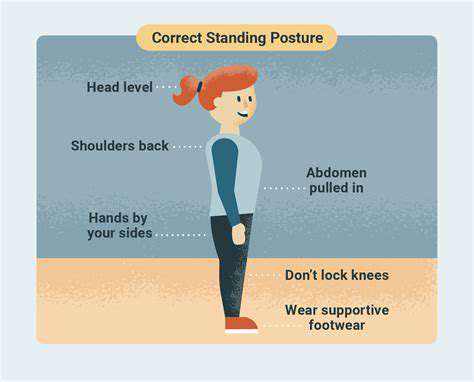Socializing Your Puppy to Loud and Unexpected Noises
Why Noise Desensitization Matters for Puppy Development

How Puppy Brains Adapt to Sounds
When we talk about helping puppies adjust to noises, we're discussing their natural ability to filter out unimportant sounds while staying alert to meaningful ones. This biological process works like a volume knob in their brains, turning down repetitive noises while keeping sensitivity to new or important sounds. It's not just about getting used to noise - their nervous systems physically change to handle constant sounds differently than sudden ones.
Scientists have observed that after repeated exposure to the same sound, fewer brain cells respond to it. This isn't laziness - it's efficiency. Puppies conserve mental energy by not reacting to predictable noises, saving their attention for things that actually matter, like their owner's voice or potential dangers. This explains why city dogs can sleep through traffic while still waking up to the sound of their food bowl.
Real-World Benefits of Sound Adaptation
This natural filtering system lets puppies live comfortably in our noisy human world. Without this ability, everyday life would be overwhelming - imagine reacting to every refrigerator hum, car horn, or TV commercial as if it were an emergency. For working dogs, this skill becomes even more critical when they need to focus on commands despite distractions.
Veterinarians emphasize the importance of proper sound exposure during key developmental periods. Puppies who don't experience normal household noises appropriately may develop lifelong noise sensitivities or phobias. On the flip side, those exposed to gradual, positive noise experiences tend to become well-adjusted adult dogs comfortable in various environments.
Interestingly, this same process helps explain why some dogs develop noise phobias. When the system malfunctions, ordinary sounds continue triggering strong reactions instead of being filtered out. This understanding helps trainers create better rehabilitation programs for noise-sensitive dogs.
Ongoing research continues to reveal how puppies' brains process sounds differently at various ages, helping breeders and owners optimize socialization periods.
Building a Step-by-Step Noise Introduction Plan

Why Gradual Introduction Works Best
Creating a structured noise introduction program follows the same principles therapists use to help people overcome fears. The key lies in slow, controlled exposure that never pushes the puppy past its comfort point. This measured approach builds confidence while preventing negative associations that could create lasting phobias.
The magic happens in the small victories - each successful exposure session rewires the puppy's brain to view noises as normal rather than threatening. Owners often notice their puppies become more curious than fearful when encountering new sounds after proper conditioning.
Mapping Your Puppy's Sound Reactions
Every puppy has unique noise sensitivities. Some startle at vacuum cleaners but ignore thunderstorms, while others react oppositely. Careful observation over several days reveals which sounds cause mild curiosity versus genuine distress. This personalized assessment forms the foundation of an effective training plan.
Creating a Sound Exposure Ladder
Effective plans organize sounds from least to most concerning. A typical progression might start with recorded sounds at low volume, then introduce real-life noises at a distance before gradually decreasing the space between the puppy and sound source. The exact sequence varies based on individual reactions.
This systematic approach allows puppies to master easier challenges before facing more difficult ones, building their confidence at each level.
The Power of Tiny Steps
Successful noise conditioning relies on exposures so subtle the puppy barely notices them. We're aiming for Hmm, that's interesting reactions, not Oh no! responses. If the puppy shows any signs of stress, we've moved too fast and need to backtrack to easier exposures.
For example, introducing doorbells might begin with the faintest ding played through phone speakers at the opposite end of the house, gradually increasing volume over weeks.
Pairing Sounds With Positive Experiences
Combining new noises with enjoyable activities creates powerful positive associations. Playing a recording of thunder at barely audible levels during mealtime or play sessions helps puppies connect the sound with good things. The volume increases imperceptibly over multiple sessions as the puppy demonstrates comfort.
This technique works because it taps into the puppy's natural learning processes rather than forcing adaptation. The puppy essentially trains itself to remain calm through positive reinforcement.
Tracking Progress and Making Adjustments
Detailed notes about reactions to each session help identify when to advance or modify the plan. Some puppies breeze through certain sounds but need extra time with others. Flexibility ensures the program moves at the puppy's natural pace rather than a predetermined schedule.
When to Consult Professionals
While many owners successfully implement noise conditioning programs, some cases require expert guidance. Certified dog behaviorists can identify subtle signs of distress owners might miss and create customized solutions for particularly noise-sensitive puppies. They also help address any underlying anxiety issues that might complicate the conditioning process.
Early intervention by professionals often prevents minor sound sensitivities from developing into full-blown phobias, saving puppies and owners years of stress.
Read more about Socializing Your Puppy to Loud and Unexpected Noises
Hot Recommendations
- The Impact of Early Socialization on a Dog's Interaction with Other Animals
- Car Travel and Puppy Socialization: Making the Journey a Positive Experience
- The Importance of Early Environmental Exposure for Puppy Development
- Taking Your Puppy to the Vet: Positive Socialization Strategies
- Making Training a Positive Experience for Your Puppy
- Public Transportation and Puppy Socialization: A Step by Step Guide
- Safe Socialization: Allowing Others to Pet Your Puppy
- Helping a Puppy Who Struggles with "Stay"
- Positive Puppy Interactions: Making Meetings with New Friends Fun
- No Treats Needed? Training Basic Commands with Verbal Praise











